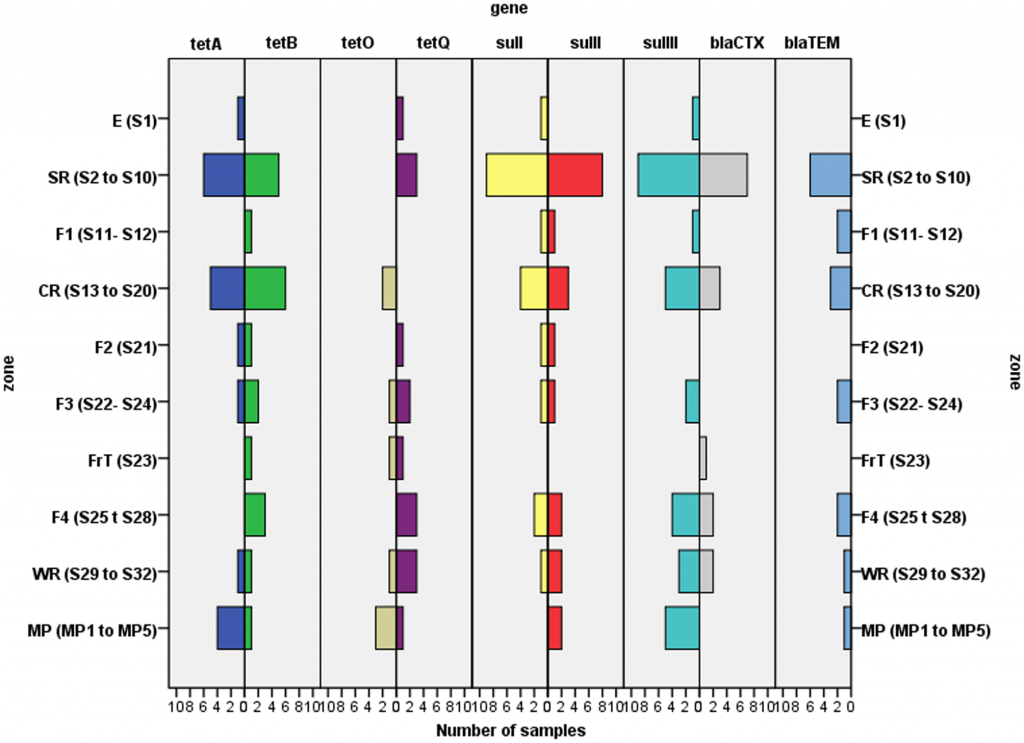The spread of antibiotic resistance traits is an ongoing and important issue that is poorly studied. This PLoS One study by Lerma et al. is the first to use a culture independent approach to characterize antibiotic resistance traits in the total microbiota present in a goat and lamb slaughterhouse. Lerma et al. found that tetracycline resistance genes (tetA and tetB) and Sulfonamide resistance genes were widely distributed throughout the slaughterhouse and in meat products (Figure 1). The authors suggest that adequate disinfection could help to reduce the risk of transmission of these antibiotic resistant traits into the food supply.

This study makes a useful contribution towards understanding the distribution of antibiotic resistance genes in a slaughterhouse.
In recent years, we have become increasingly aware of the misuse of antibiotics in conventional agricultural practices, particularly where antibiotics are used to promote animal growth rather than to treat sick individuals. In an annual report posted in October 2014, the FDA reported that the quantity of antibiotics sold for livestock use increased by 16% from 2009 to 2012. Although antibiotics do promote growth, the use of antibiotics to promote growth is risky because it may spread of antibiotic resistance traits into both livestock and human populations. In December 2013, one year ago, the FDA implemented a new policy (to be phased in over three years) that makes it illegal for farmers and ranchers to use antibiotics to make animals grow bigger. Fortunately (as we reported here last week), there are other strategies that seem to work like the one taken by a national chicken producer who is using probiotics instead of antibiotics for animal growth promotion. And lest we go overboard and ban the use of antibiotics in livestock altogether, it bears mentioning that that denying care to sick animals raised for human purposes is inhumane (even if that is what may be required to sell meat as organic).